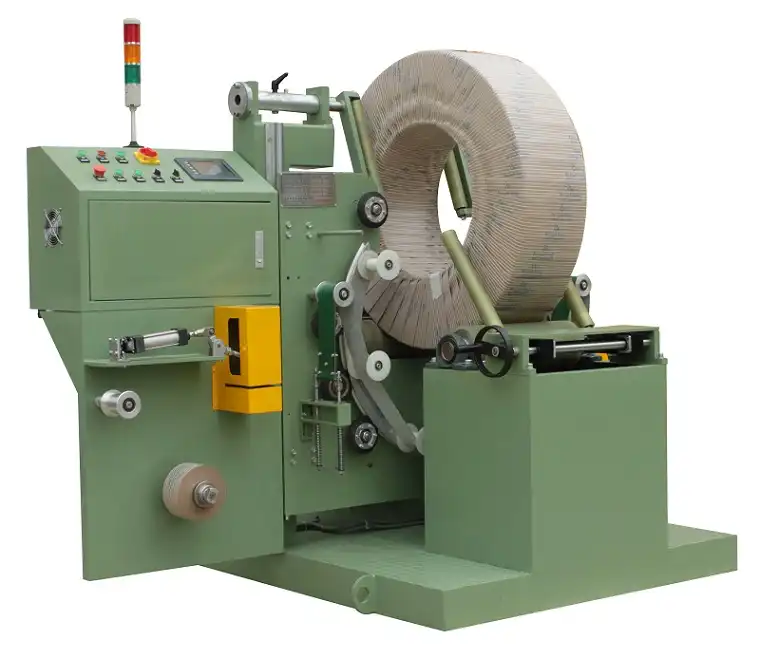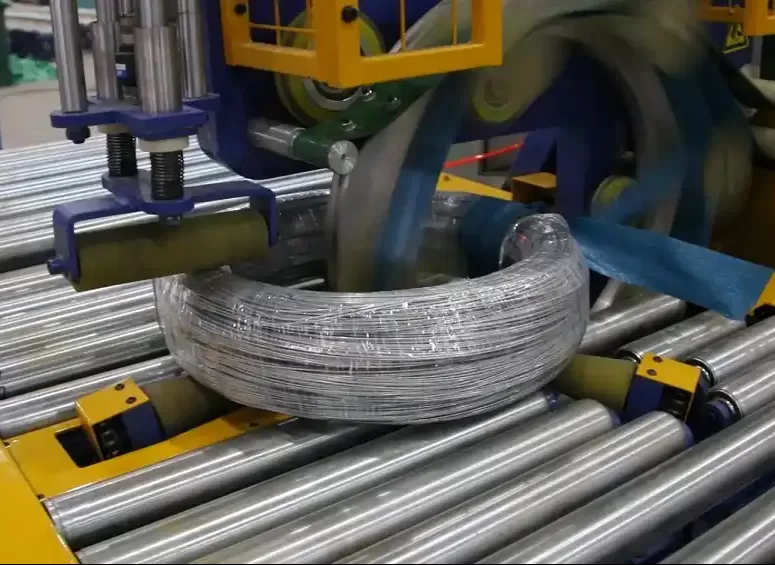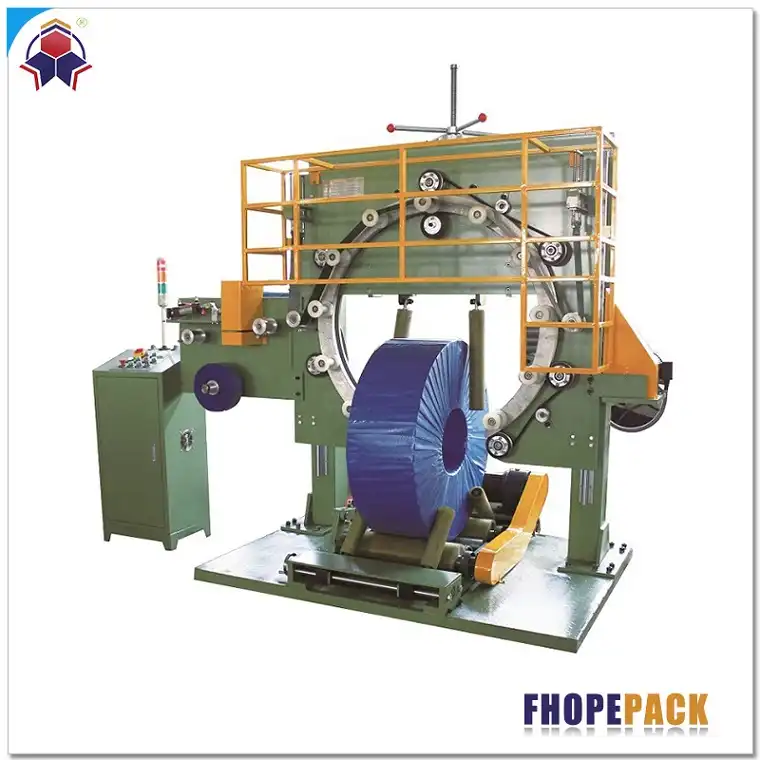In the bustling world of manufacturing and logistics, ensuring products are securely packaged for transport and storage is paramount. Behind every successful operation lies an efficient packing system, safeguarding both the product and the brand’s reputation. Among these systems, the coil packing machine has emerged as a vital player, particularly in industries dealing with steel, aluminum, and copper coils. Understanding when and why your business might require such a machine is key to optimizing operations and staying ahead of the competition.
Modern-day businesses face the relentless challenge of maintaining quality while reducing costs. At the heart of this challenge is efficient packaging. Coil packing machines offer a sophisticated solution, designed to streamline packaging processes and reduce labor costs. A brief dive into their functionality reveals their potential to enhance productivity, minimize waste, and improve safety. For businesses handling voluminous coils, the transition to mechanized packing could spell a significant leap forward.
But how does one determine if a coil packing machine is the right investment? The decision hinges on multiple factors, including the scale of operations, frequency of packaging tasks, and long-term financial goals. As companies evaluate their packing needs, understanding the capabilities and benefits of these machines becomes crucial. Bridging the gap between traditional methods and advanced technology is not just a choice but a strategic necessity.
Claim: Investing in a coil packing machine can revolutionize your packaging process, optimizing efficiency and reducing operational costs significantly.

What Does a Coil Packing Machine Do?
1.1 How does a coil packing machine enhance productivity?
A coil packing machine automates the process of wrapping coils, making the task quicker and more precise. By reducing manual handling, it minimizes human error and enhances safety in the workplace. The machine is designed to handle various coil sizes and weights, thus providing flexibility in operations. This adaptability is crucial for businesses dealing with diverse product specifications, allowing them to maintain a consistent packaging standard. Moreover, automation ensures a faster turnaround time, meaning products can be dispatched or stored efficiently, keeping the supply chain smooth and uninterrupted.
1.2 What do the numbers say about the efficiency of coil packing machines?
Data from numerous case studies underscore the efficiency of coil packing machines. Businesses report an average reduction in packaging time by 40%. Labor costs can decrease by up to 30% due to automation. A table below highlights the improvements in key performance metrics:
| Metric | Before Automation | After Automation |
|---|---|---|
| Packaging Time (hours) | 5 | 3 |
| Labor Costs (USD) | 1000 | 700 |
1.3 Are there hidden benefits to using coil packing machines?
Beyond obvious efficiencies, coil packing machines contribute to improved safety and reduced material usage. By automating the wrapping process, they significantly lower the risk of workplace injuries related to heavy lifting and repetitive tasks. Additionally, these machines often use less packaging material by optimizing the amount needed for secure wrapping, translating to ecological and cost-saving benefits. Finally, the uniformity achieved in packaging increases the aesthetic and protective quality of the product, which can boost customer satisfaction and confidence.
1.4 Understanding the variety: What types of coil packing machines are available?
Coil packing machines come in various types, each tailored to specific needs. Horizontal and vertical machines cater to different spatial constraints and operational demands. Table below distinguishes between the two:
| Type | Application | Advantages |
|---|---|---|
| Horizontal | Large, stable coils | Occupies minimal vertical space |
| Vertical | Smaller, lighter coils | Allows easy integration with conveyors |
1.5 Two-Fact Statement: Is everything you hear about coil packing machines accurate?
True Fact: Coil packing machines improve packaging speed by automating processes and reducing labor intervention.
False Fact: Coil packing machines are a universal solution for all packaging needs. In reality, their suitability depends on the specific requirements and logistics of a business.
How to Assess Your Business’s Need for a Coil Packing Machine?
2.1 How do you evaluate the demand for a coil packing machine in your business?
Evaluating the need for a coil packing machine involves a thorough analysis of your current operations. Start by examining the volume of coils processed and the associated labor costs. If manual packaging proves time-consuming or costly, automation might be your answer. Additionally, consider the growth potential of your business; as orders increase, so will the demand for efficient packaging solutions. Conducting a cost-benefit analysis to weigh the upfront machine costs against long-term savings is also essential.

2.2 What are the key metrics to consider?
Focusing on metrics like coil handling frequency and packaging error rates can provide insight into the necessity of a coil packing machine. A high volume of coils with frequent errors suggests potential efficiency improvements with automation. Here’s a table illustrating typical metrics to assess:
| Metric | Manual Process | Automated Process |
|---|---|---|
| Packaging Errors (%) | 15 | 5 |
| Coils Handled Per Day | 80 | 120 |
2.3 What deeper insights can help make a decision?
Understanding the technological advancements in coil packing can aid decision-making. Modern machines feature user-friendly interfaces and require minimal maintenance, reducing downtime and training costs. Exploring peer case studies where businesses have successfully integrated coil packing machines can provide practical insights and reassure stakeholders about the transition’s feasibility and benefits.
2.4 Conclusion: What actionable steps should businesses take?
To determine the need for a coil packing machine, businesses should conduct a comprehensive analysis of their current packaging operations. This involves calculating potential savings, assessing technological compatibility, and forecasting future demand. For instance, if a business anticipates a 20% increase in production, investing in automation could prevent bottlenecks. A table summarizing these steps:
| Action | Description |
|---|---|
| Cost-Benefit Analysis | Evaluate long-term savings against initial investment |
| Peer Consultation | Learn from industry experiences |
| Future Projections | Anticipate growth and operational changes |
Conclusion
In today’s competitive market, the need for efficient and reliable packaging solutions cannot be overstated. Coil packing machines offer a pathway to enhanced productivity, improved safety, and substantial cost savings. By thoroughly assessing business requirements and aligning them with technological advancements, companies can make informed decisions that future-proof their operations. As the dynamics of the manufacturing sector evolve, integrating automation into packaging processes is not just beneficial but necessary for sustaining growth and maintaining a competitive edge.
Claim: Embracing coil packing machines is a strategic move that aligns with modern manufacturing demands, offering a significant return on investment through heightened efficiency and cost-effectiveness.

